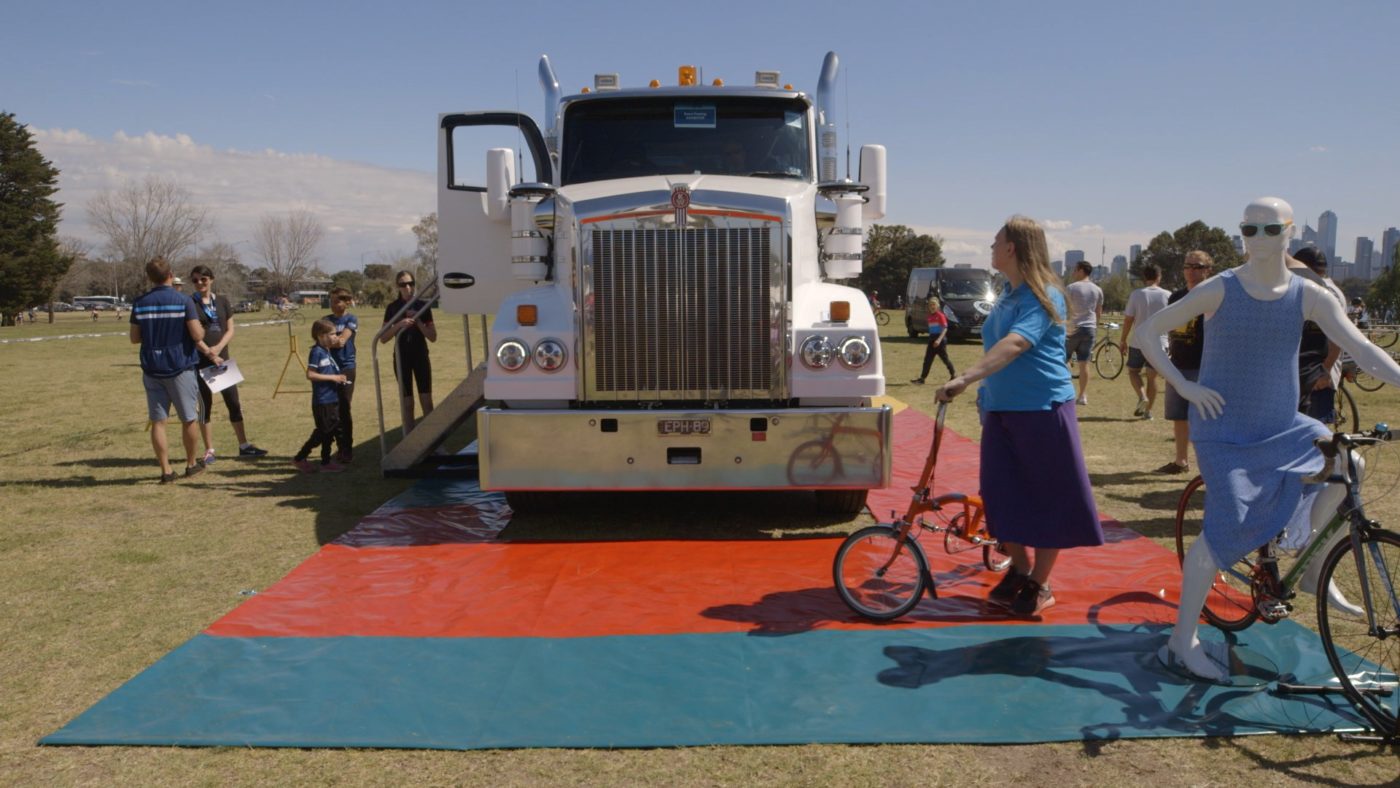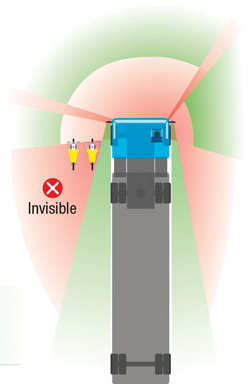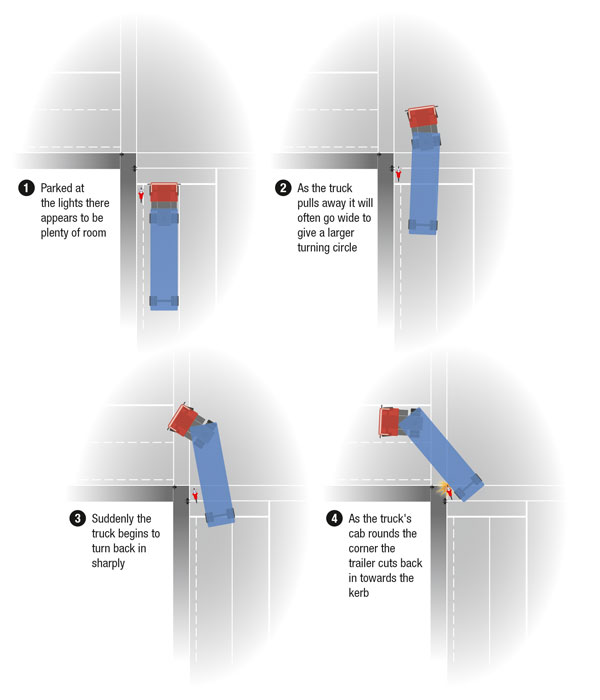Swapping Seats has been commissioned by Rail Projects Victoria in partnership with Bicycle Network
Truck drivers and vulnerable road users
Building positive relationships
Commissioned by Rail Projects Victoria, Bicycle Network’s Swapping Seats awareness campaign is part of a wider program of engagement that includes the activities of the Amy Gillett Foundation.
1. Swapping Seats – Bicycle Network
Swapping Seats sets out to raise awareness about where and how people who walk and ride should position themselves around trucks and heavy vehicles.
As part of Bicycle Network’s ‘Swapping Seats’ campaign pilot, bike riders at Around the Bay were invited to step up into a truck and sit in the driver’s seat. Riders where then asked to look in the mirrors as a bike rider moved around the truck.
The aim of the campaign is to build a positive relationship between the drivers of heavy vehicles and bike riders by showing people just how little a driver can see at an intersection.
A similar campaign was run at Melbourne’s National Ride2Work Day breakfast in Docklands with team members providing information about the awareness campaign.
read more2. sharing roads safely – Amy Gillett Foundation
The Amy Gillett Foundation has piloted an awareness program for truck drivers to more safely share the road by understanding the reasoning behind vulnerable road user’s actions and behaviours on the road.
The program includes the opportunity for truck drivers to step down from the truck and onto a bicycle seat to ride the streets and gain the perspective of these vulnerable road users.
For more information, please click here to visit the Amy Gillett Foundation website.
Heavy vehicles and bikes
Heavy vehicle and truck blind spots block out a lot more of the road than people who ride bikes realise.
Sharing the road with trucks is an everyday experience in Melbourne. From arterial roads to residential streets, you can expect to find trucks or heavy vehicles or nearly any road in Victoria.
Because of their size and width, trucks have blind spots in front, on the sides and behind them.
The drivers of heavy vehicles are professionals and are adept at piloting their huge transporters in traffic and through intersections.
However, it’s important for people who ride bikes to remember that for all their driving prowess, drivers of heavy vehicles simply cannot see what their mirrors don’t show them.
Large vehicles, such as trucks, tourist coaches and buses, are a challenge for people who ride bikes because they take up so much room on the road.
Specifically, large vehicles occupy the space that bike riders are generally accustomed to having available to pass on the left-hand side when there isn’t a bike lane. However, when sharing the road with larger vehicles, the left side is a highly risky place to be.
From the drivers’ seat
It’s important that people who ride bikes understand what the driver can see from their seat.
At United Energy Around the Bay in October 2018, bike riders were asked to sit in the driver’s seat of a truck to get an understanding of which parts of the road and road users truck drivers can see.
Did you know that there are regions of the road around trucks and large vehicles that the driver cannot see by looking directly or using a mirror?


Ride to be seen
The best place to ride
The major blind spots for a large vehicle are directly behind and to the side.
Here are some to be aware of:
- the right-hand blind spot is dangerous when overtaking: the rider must be aware that they might not be seen if the large vehicle pulls out to the right.
- don’t move into a space in front of a truck—even if it’s a bike box—because the blind spot under the windscreen often stretches more than two metres ahead, which is enough to hide you.
- the left-hand blind spot is the greatest risk to the bike riders. When a large vehicle begins to turn, the ample alley down the inside closes up where the trailing wheels of a longer vehicle cut in tight to the curb. Side mirrors also become less effective.
Many freight and construction companies have recognised the risks of sharing the road with bikes and are making improvements to their fleets’ large-vehicle mirrors, vision aids and side under-run protection rails.
However, people who ride bikes need to be aware of the extent of the blind spots of these vehicles and ride defensively and predictably.
Mandatory safe systems needed nationally
In 2015, Bicycle Network made a submission to the Inquiry into Aspects of Road Safety in Australia calling for the Federal Government to:
- Actively pursue technologies to improve the safety of heavy vehicles on our roads.
- Implement Electronic Work Diaries to ensure compliance with fatigue laws
- Actively pursue Phase II of the National Heavy Braking Strategy with a view to adopt a new Australian Design Rule by 2017.
Sadly, none of these were adopted. While governments around the world have moved to rapidly mandate additional truck safety to protect bike riders, our national leaders have turned a blind eye.
The Australian Trucking Association (ATA) recommends that members fit side underrun protection to their vehicles.
While many trucking companies are taking their own measures to reduce risks and improve fields of vision, the Commonwealth Government has the authority to ensure the measures are compulsory and mandated.
Bicycle Network calls for national safety standards and awareness campaign
Bicycle Network strongly believes that we need to actively pursue technologies to improve the safety of heavy vehicles on our roads.
In Bicycle Network’s Federal budget submission, we called on the Federal Government to require that all heavy vehicles be fitted with the following:
- Class V mirrors, and reversing and blind spot cameras, giving the driver a better view of road users around their vehicles
- Side underrun protection to protect bike riders from being dragged under the wheels in the event of a collision
- Audible left turn warning and reverse squawker alert systems to communicate heavy vehicle movements to all road users
- Hydraulic payload monitoring system to determine and notify drivers of real time truck weight
In addition to physical mitigation measures such as side under-run protection rails, blind-spot detection systems, truck driver training and road user awareness programs are integral to the prevention of crashes involving heavy vehicles.
Help pressure the federal government to rapidly reduce the risk that heavy vehicles pose to people who ride.
Share our federal budget submission with your federal MPs and Senators.
DOWNLOAD OUR FEDERAL BUDGET PAPERLatest news and updates
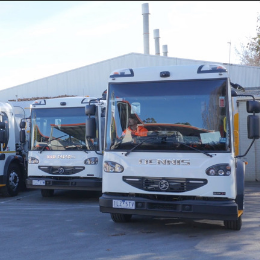
Safer garbage trucks in Melbourne City
Bustling central Melbourne will be safer for bike riders and pedestrians following the introduction of modern, low-cabin waste collection trucks.

A new safety standard for heavy vehicles needed
Bicycle Network has renewed calls for mandatory safety measures that protect vulnerable road users to be included as part of Australia’s Heavy Vehicle National Law.
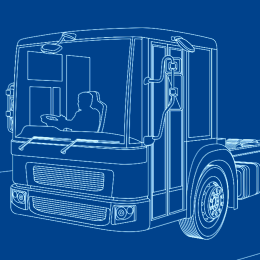
Truck vision standards launch in London
The City of London is introducing world-leading regulations to chase out trucks with poor vision that cause many of the tragic crashes with bikes and...
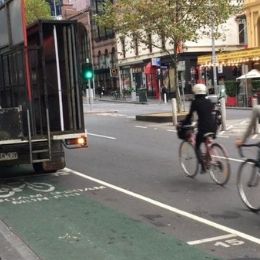
Get the truck out of the way
There are growing safety concerns associated with trucks illegally parking in bike lanes throughout Melbourne. Send us your photos to help us tackle the issue.

Construction trucks fenced in by GPS
The Melbourne Metro Tunnel project is using innovative GPS technology to keep construction vehicles on approved roads and away from bike riders.
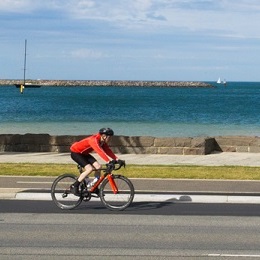
Trucks turfed off Beach Road
Trucks will be banned from driving on Beach Road between Port Melbourne and Mordialloc all day, everyday from the end of this month.



